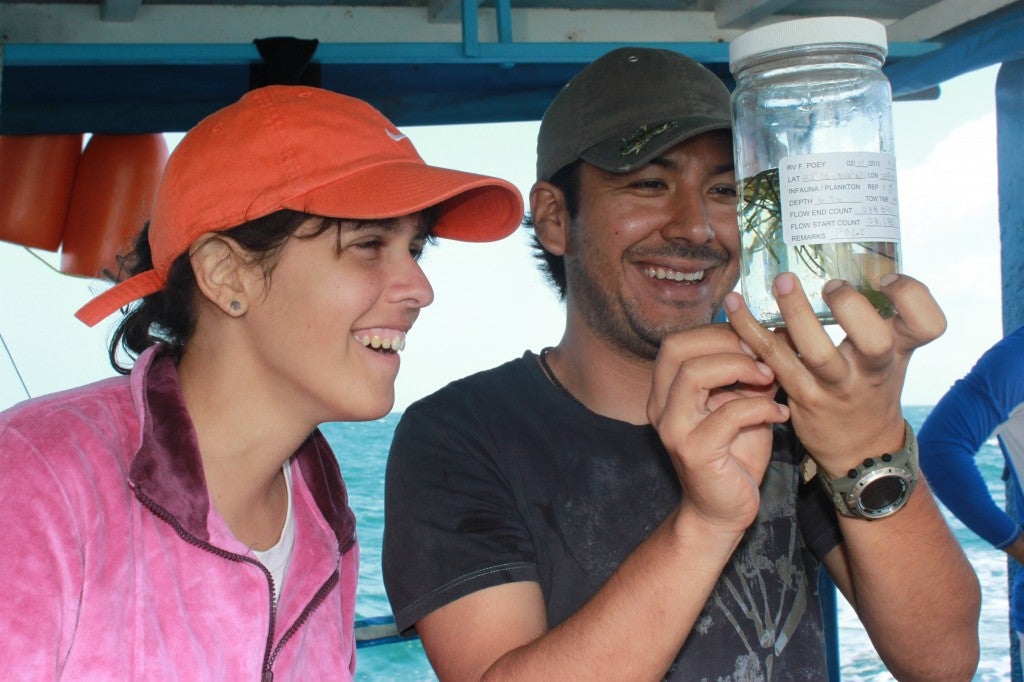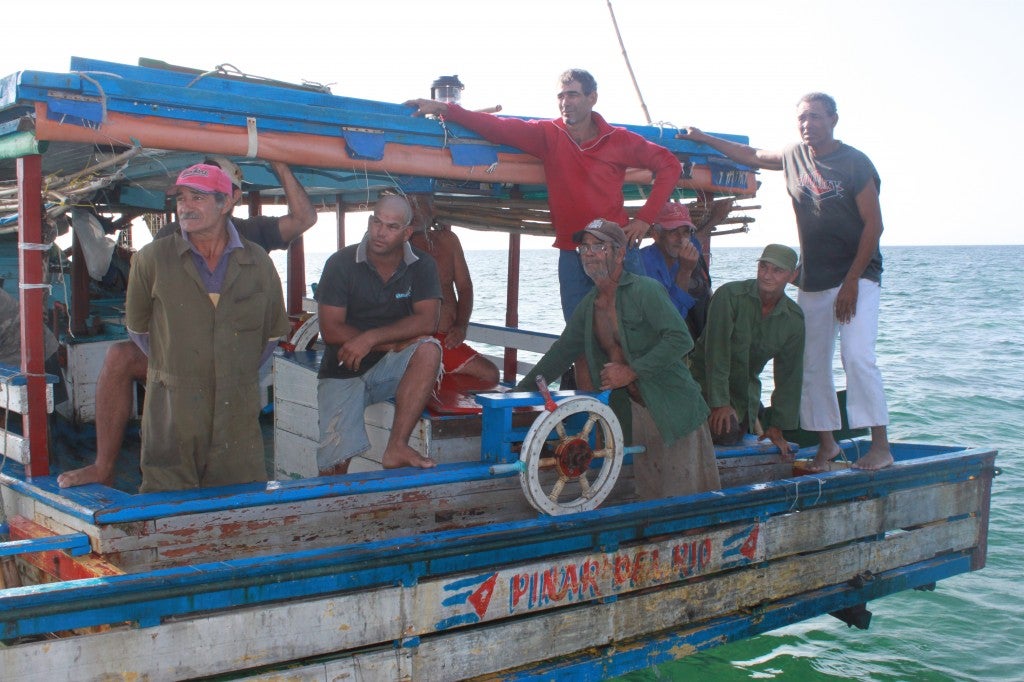
Cuban and Mexican researchers, Alejandra Briones and Ivan Mendez, look at a sample that will be analyzed in CIM’s lab to assess the faunal communities in the water column.
By: Kendra Karr and Valerie Miller
Part III of a blog series detailing a February 2013 Research Expedition in Cuba organized by EDF Oceans’ Cuba, Science, and Shark teams and funded by the Waitt Foundation. A team of scientists from Cuba, Mexico and the U.S. along with EDF staff set sail to share knowledge, scientific methodologies and to survey shark populations in Cuba. The tri-national expedition was led by Cuban scientists from University of Havana’s Center for Marine Research (CIM) and U.S. scientists from the Mote Marine Laboratory in Florida.
Researchers from Cuba, Mexico and the U.S. participated in an exploratory research cruise in the Gulf of Batabanó along the Southern coast of Cuba to monitor shark populations, local faunal communities and to train fellow team members in monitoring techniques. Leaving the port of Batabanó, the RV Felipe Poeytransected the shallow, soft-sediment habitat that comprises the majority of the Gulf. The cruise set off for the remote and sparsely populated Isle of Youth, the largest island in the Canarreos Archipelago. Canarreos Archipelago is home to a national park and several marine protected areas (MPAs) which contain habitats that possess ecotourism potential and provide refuge for ecologically and economically important species such as lobsters, sharks and finfish. Read More


.jpg)
.jpg)

